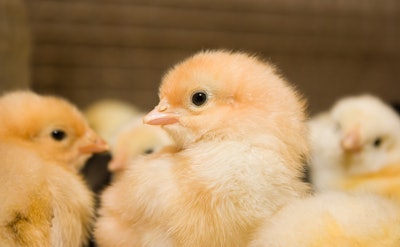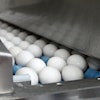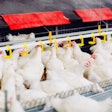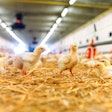
Meat quality is affected by complex parameters throughout the production cycle, and one of those parameters is the quality of the broiler chick, explained Dr Liris Kindlein, Professor at the Federal University Rio Grande do Sul, Brazil.
During “Influence of management on carcass quality of broiler chickens,” a quarterly webinar from the non-profit professional organization Poultry Science Association, Kindlein explained how broiler chick quality and hatchery management can affect meat quality.
“Chicks are the primary raw material for producing quality meat. The quality of the chick in the first stages of life is crucial for its development until the day of slaughter,” said Kindlein.
The first seven days of a chick’s life give producers an opportunity to maximize gut development, which is the most important factor when optimizing broiler performance and survivability because the gut is critical for immune function, explained Kindlein.
“The chick’s gut can grow up to six times its initial weight in the first seven days of life,” she said. “There is a strong relationship between the seven-day body weight and market age, indicating the importance of chick quality in terms of meat quality.”
The effects of the hatchery
Chick quality is influenced by incubation conditions during the embryonic development stage.
“Approximately 80% of the hatchery’s results depend on the quality and consistency of the egg,” she stated. on
Uneven eggs produce uneven chicks. Uneven eggs will also affect the incubation process because different sized eggs need different incubation times and temperatures.
Nonuniformity among birds in the field can lead to birds eating too much or too little, poor feed conversion and mortality. Additionally, if uneven sized birds are slaughtered, there can be problems during processing.
Quality indicators for day old chicks
To ensure the proper feed intake and weight gain of chicks, it is important to monitor performance indicators, which will help prevent meat quality issues.
The first is the fullness of the chick’s crop. According to Kindlein, at two hours after chick placement the crop should be 75% full, at 12 hours it should be 85% full and at 24 hours it should be 98% full. This can help indicate if the temperature in the house is optimal. If the temperature is too high, chicks tend to drink more than eat, she added.
It is also important to assess hydration by observing the shine of the bird’s legs, as shine is an indicator of proper hydration. Producers should also check for hock deformities that could have resulted from maternal nutrition deficiencies or inadequate incubation conditions that could lead to meat quality issues.
Another quality indicator producers should monitor is proper umbilical cord healing. Incomplete canal closure can give an opportunity for bacterial or fungal contamination where the cord was attached, Kindlein explained. In terms of meat quality, improper umbilical cord healing can also lead to omphalites or other deformities on the carcass.



















